Abstract
Dengue type 2 virus (DV) induces two generations of T suppressor cells (Ts1 and Ts2) in murine spleen. The Ts2 cells produce a soluble factor ( SF2 ) which suppresses DV-specific IgM antibody plaque-forming cells (PFC). In this study the target cell of SF2 was examined. The results show that SF2 requires a third generation of T cells (T3) in order to mediate suppression. The surface phenotype of this T3 cell is Ly 1+ and the suppression mediated is antigen specific.
Full text
PDF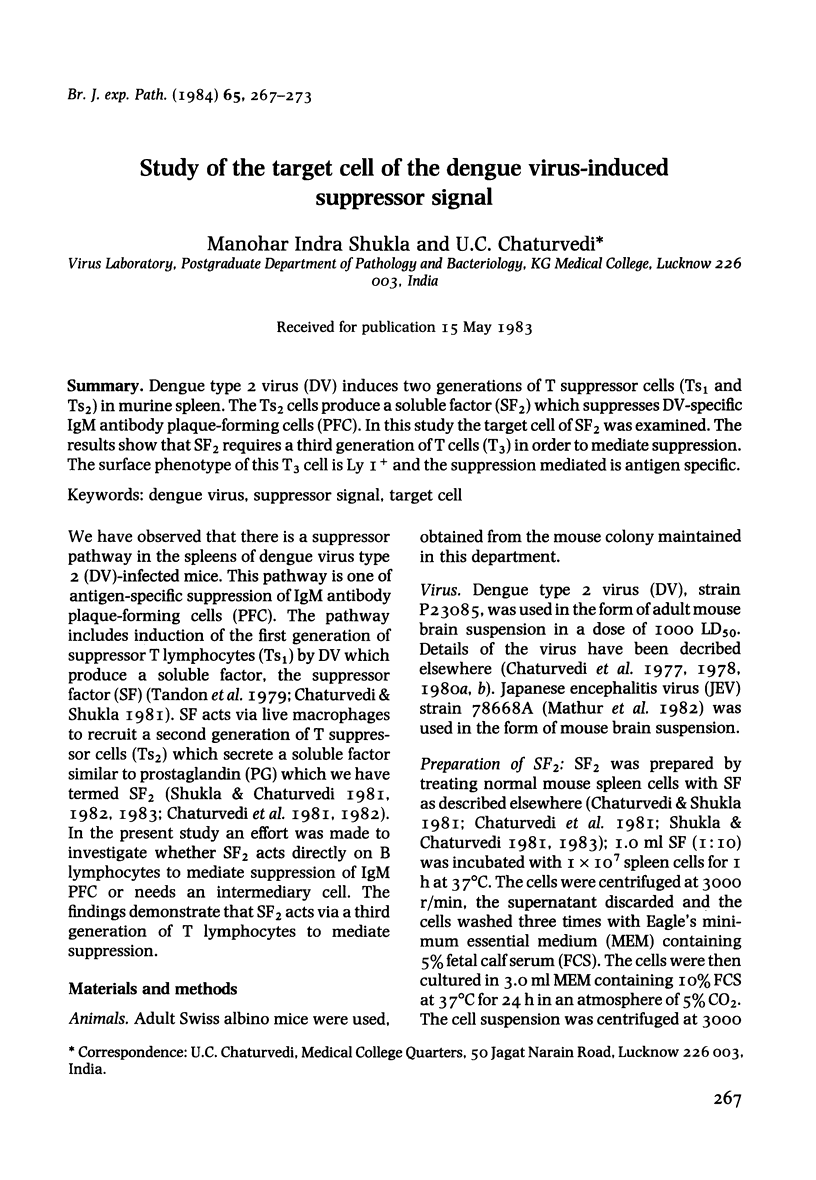
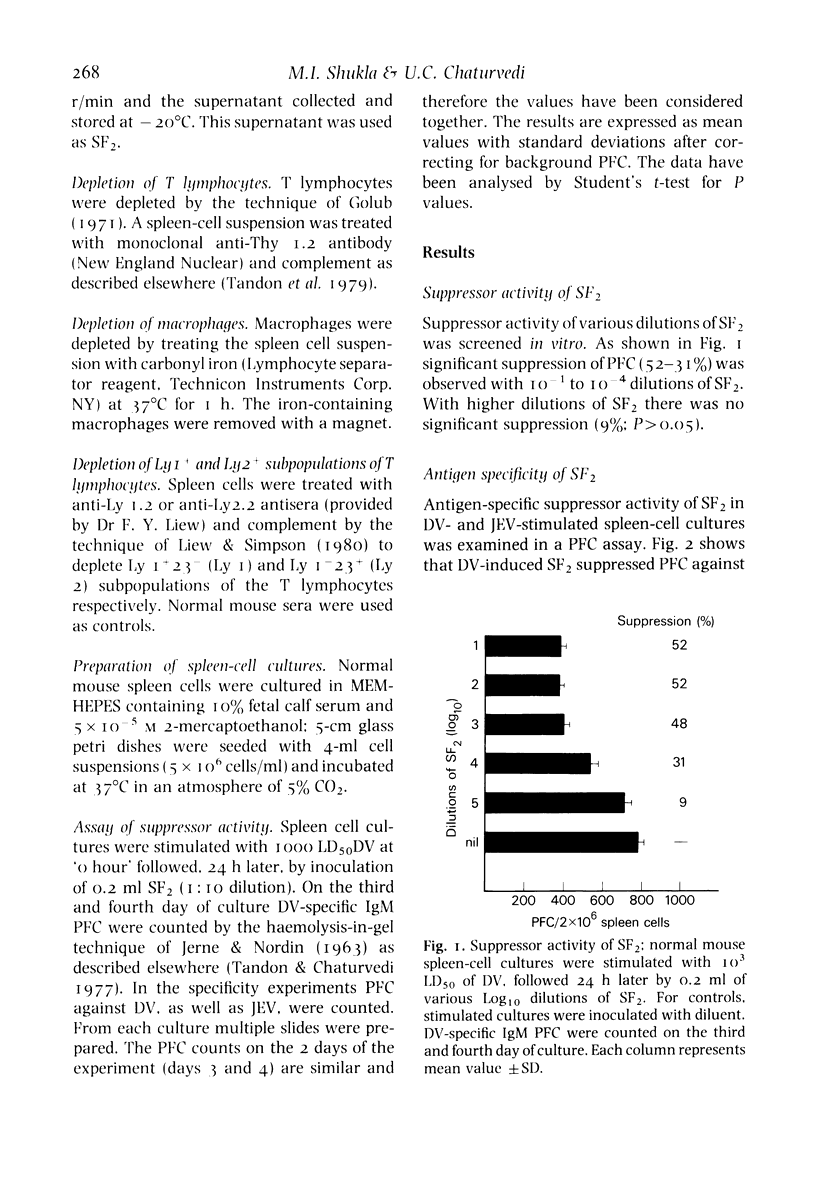
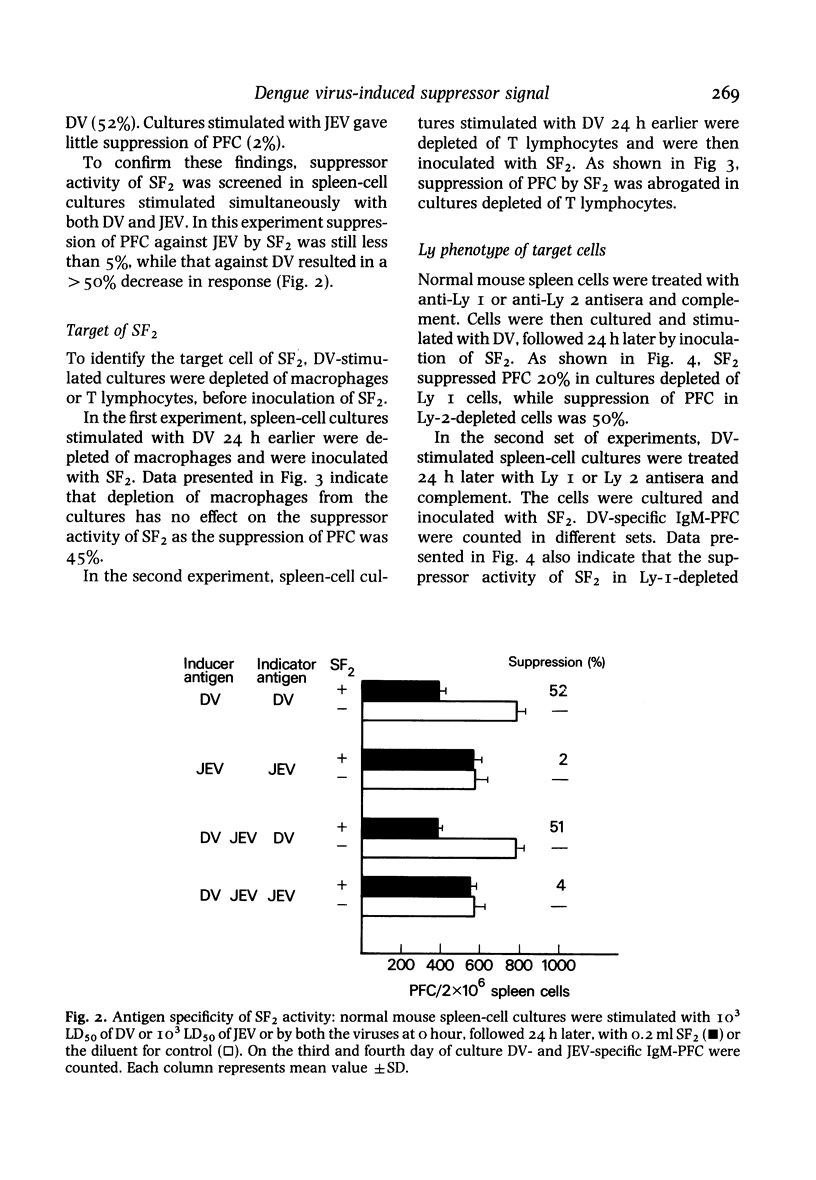
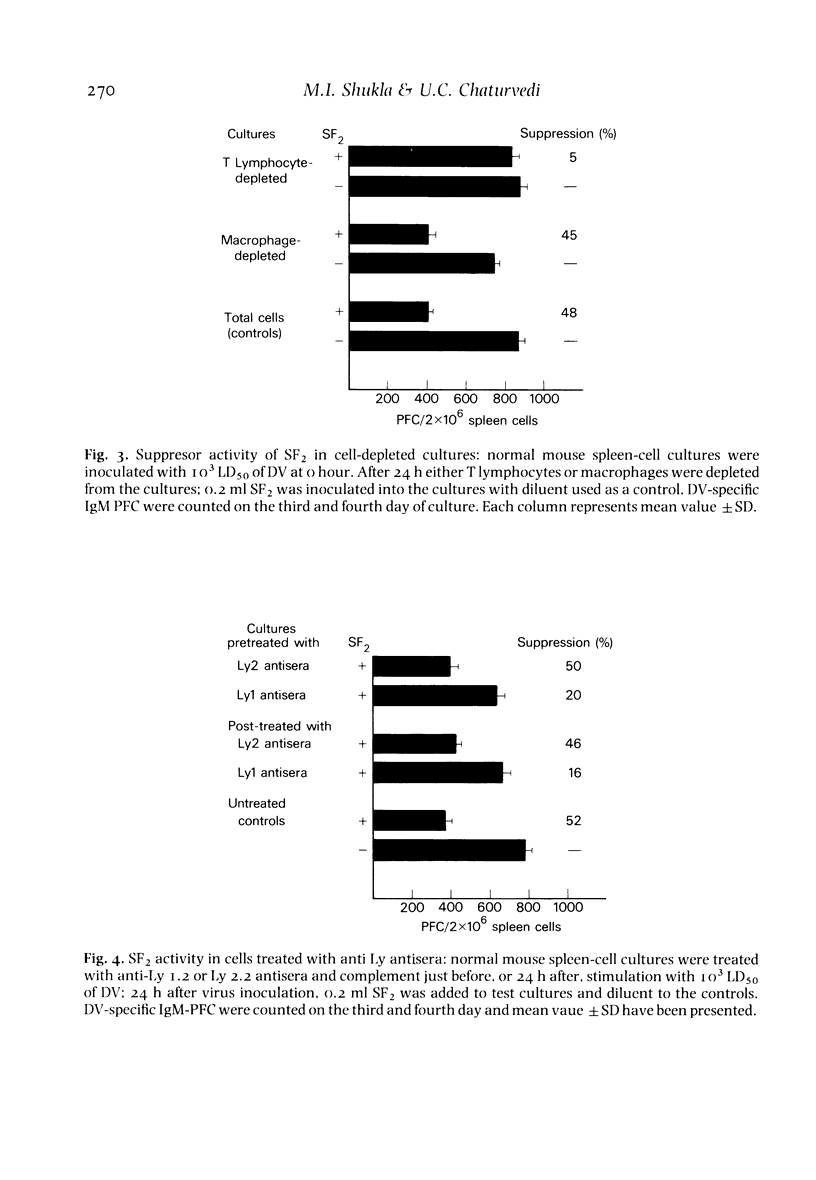
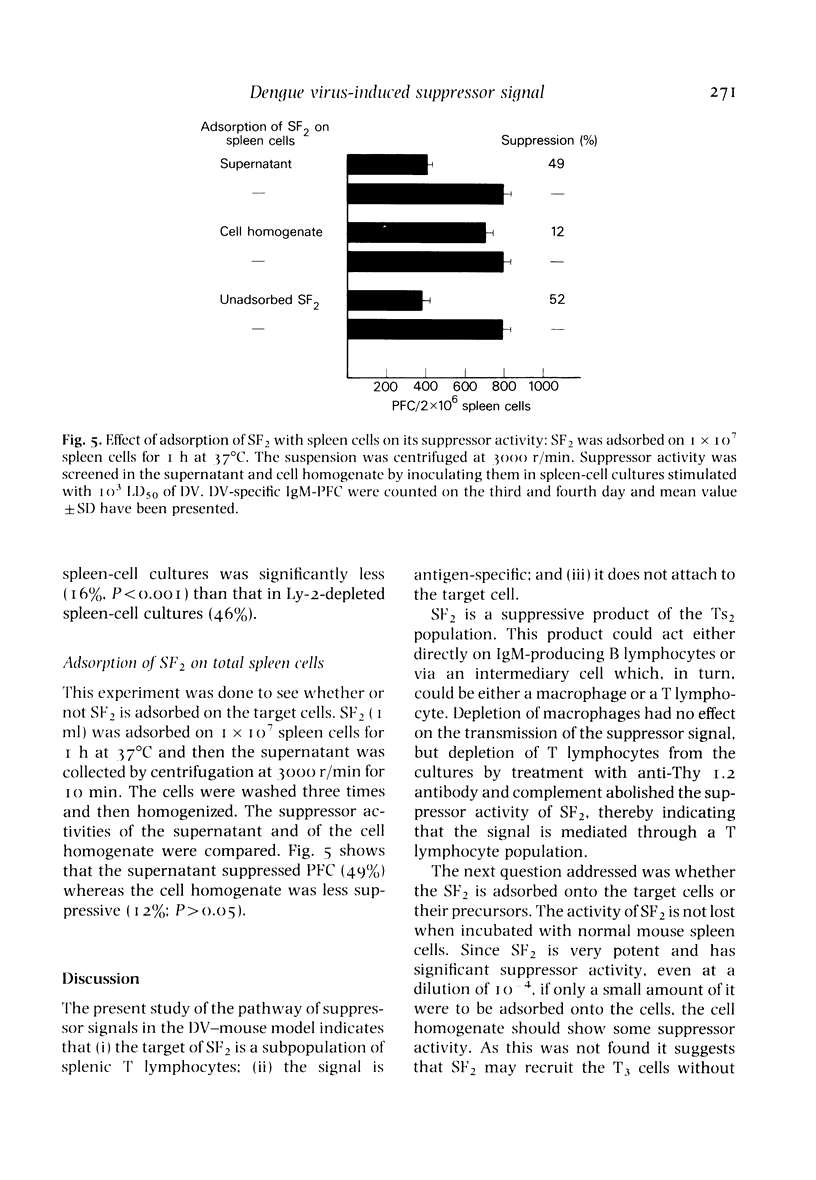
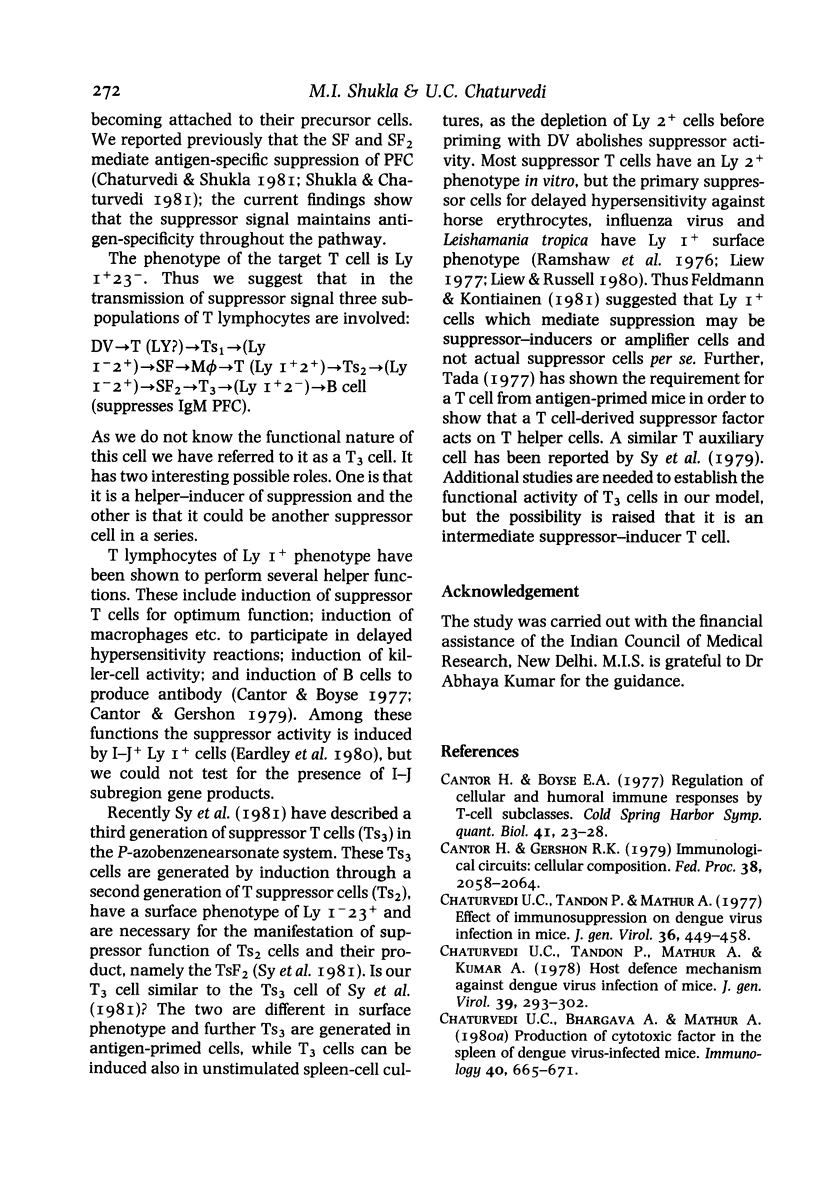
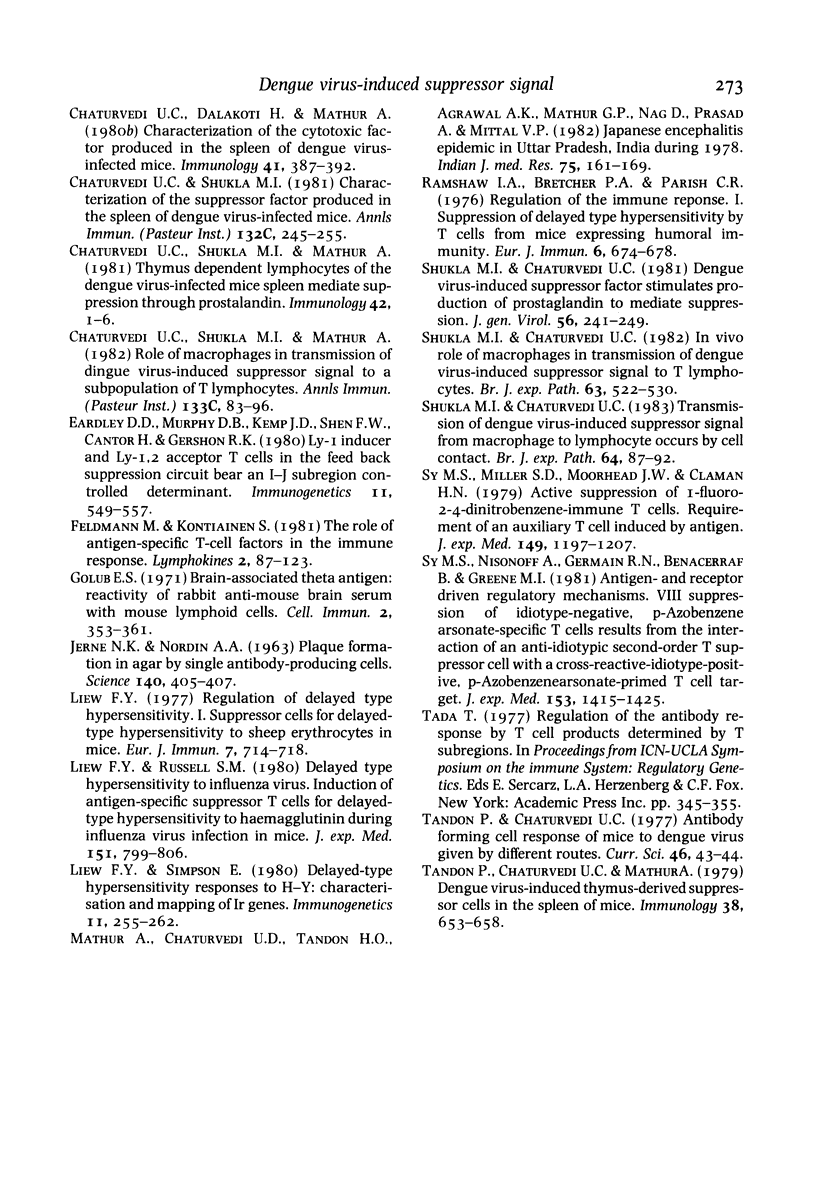
Selected References
These references are in PubMed. This may not be the complete list of references from this article.
- Cantor H., Boyse E. A. Regulation of cellular and humoral immune responses by T-cell subclasses. Cold Spring Harb Symp Quant Biol. 1977;41(Pt 1):23–32. doi: 10.1101/sqb.1977.041.01.006. [DOI] [PubMed] [Google Scholar]
- Cantor H., Gershon R. K. Immunological circuits: cellular composition. Fed Proc. 1979 Jun;38(7):2058–2064. [PubMed] [Google Scholar]
- Chaturvedi U. C., Dalakoti H., Mathur A. Characterization of the cytotoxic factor produced in the spleen of dengue virus-infected mice. Immunology. 1980 Oct;41(2):387–392. [PMC free article] [PubMed] [Google Scholar]
- Chaturvedi U. C., Shukla M. I. [Characterization of the suppressor factor produced in the spleen of dengue virus-infected mice]. Ann Immunol (Paris) 1981 May-Jun;132C(3):245–255. doi: 10.1016/0769-2625(81)90075-1. [DOI] [PubMed] [Google Scholar]
- Chaturvedi U. C., Tandon P., Mathur A., Kumar A. Host defence mechanisms against dengue virus infection of mice. J Gen Virol. 1978 May;39(2):293–302. doi: 10.1099/0022-1317-39-2-293. [DOI] [PubMed] [Google Scholar]
- JERNE N. K., NORDIN A. A. Plaque formation in agar by single antibody-producing cells. Science. 1963 Apr 26;140(3565):405–405. [PubMed] [Google Scholar]
- Liew F. Y. Regulation of delayed-type hypersensitivity. I. T suppressor cells for delayed-type hypersensitivity to sheep erythrocytes in mice. Eur J Immunol. 1977 Oct;7(10):714–718. doi: 10.1002/eji.1830071013. [DOI] [PubMed] [Google Scholar]
- Liew F. Y., Russell S. M. Delayed-type hypersensitivity to influenza virus. Induction of antigen-specific suppressor T cells for delayed-type hypersensitivity to hemagglutinin during influenza virus infection in mice. J Exp Med. 1980 Apr 1;151(4):799–814. doi: 10.1084/jem.151.4.799. [DOI] [PMC free article] [PubMed] [Google Scholar]
- Liew F. Y., Simpson E. Delayed-type hypersensitivity responses to H-Y: characterization and mapping of Ir genes. Immunogenetics. 1980;11(3):255–266. doi: 10.1007/BF01567792. [DOI] [PubMed] [Google Scholar]
- Ramshaw I. A., Bretscher P. A., Parish C. R. Regulation of the immune response. I. Suppression of delayed-type hypersensitivity by T cells from mice expressing humoral immunity. Eur J Immunol. 1976 Oct;6(10):674–679. doi: 10.1002/eji.1830061003. [DOI] [PubMed] [Google Scholar]
- Shukla M. I., Chaturvedi U. C. Dengue virus-induced suppressor factor stimulates production of prostaglandin to mediate suppression. J Gen Virol. 1981 Oct;56(Pt 2):241–249. doi: 10.1099/0022-1317-56-2-241. [DOI] [PubMed] [Google Scholar]
- Shukla M. I., Chaturvedi U. C. In vivo role of macrophages in transmission of dengue virus-induced suppressor signal to T lymphocytes. Br J Exp Pathol. 1982 Oct;63(5):522–530. [PMC free article] [PubMed] [Google Scholar]
- Shukla M. I., Chaturvedi U. C. Transmission of dengue virus-induced suppressor signal from macrophage to lymphocyte occurs by cell contact. Br J Exp Pathol. 1983 Feb;64(1):87–92. [PMC free article] [PubMed] [Google Scholar]
- Sy M. S., Nisonoff A., Germain R. N., Benacerraf B., Greene M. I. Antigen- and receptor-driven regulatory mechanisms. VIII. Suppression of idiotype-negative, p-azobenzenearsonate-specific T cells results from the interaction of an anti-idiotypic second-order T suppressor cell with a cross-reactive-idiotype-positive, p-azobenzenearsonate-primed T cell target. J Exp Med. 1981 Jun 1;153(6):1415–1425. doi: 10.1084/jem.153.6.1415. [DOI] [PMC free article] [PubMed] [Google Scholar]
- Tandon P., Chaturvedi U. C., Mathur A. Dengue virus-induced thymus-derived suppressor cells in the spleen of mice. Immunology. 1979 Dec;38(4):653–658. [PMC free article] [PubMed] [Google Scholar]


